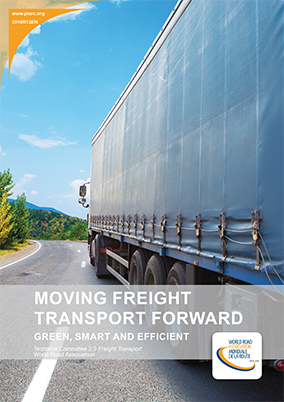Moving freight transport forward - Green, smart and efficient

This study addresses the challenges associated with freight transportation efficiency, presenting and analysing a series of good practice examples that reveal efficient freight transportation systems. It should serve as a source of inspiration for making freight transportation more efficient from the perspective of economic, environmental and social sustainability.
The concept of co-modality is central to this report and it is defined as the use of each transportation mode in its best configuration to optimize the whole transportation chain. This study focuses on the road mode and its interfaces with the other modes. Freight transportation produces many negative consequences, from pollution emissions to safety issues and disruption of the local economy. However, freight transportation as a part of the supply chain is essential for the economy and our quality of life and is expected to keep growing in the coming decades. As such, optimized transportation solutions are needed to maximize freight efficiency while minimizing negative impacts. This report suggests solutions for optimizing the efficiency of the freight transportation system.
Optimized transportation means solutions that considerably improve on the current freight efficiency, balancing economic social and environmental impacts. An analysis of examples of good practices according to this definition helped identify the challenges regarding the pillars of sustainability, conditions of implementation and level of transferability of each example.
It also appears that the lack of uniformity in the level of development of technology (vehicle/infrastructure), policy/regulations and behaviour/logistics hinders the evolution toward an optimized freight transportation system. Improved national and international dialogue and better cooperation are important areas to develop to overcome these obstacles.
Furthermore, cooperation between the stakeholders is a critical factor, necessary for achieving success in any case. Additionally, many case examples mention behavioural aspects as a key success factor. Competitiveness and ability to achieve financial benefits are, however, central for the majority of cases.
Information sheet
- Date: 2016
- Author(s): Comité technique 2.3 Transport de marchandises Technical Committee 2.3 Freight Transport
- Domain(s): Freight Transport
- Type: 2016R13EN - Technical Report
- PIARC Ref.: 2016R13EN
- ISBN: 978-2-84060-396-2
- Number of pages: 50